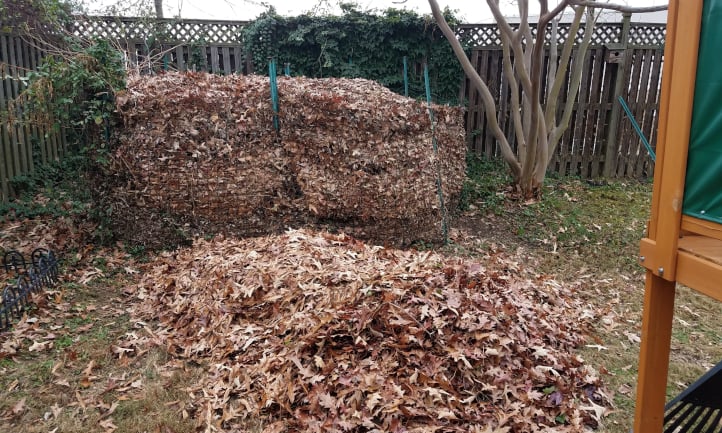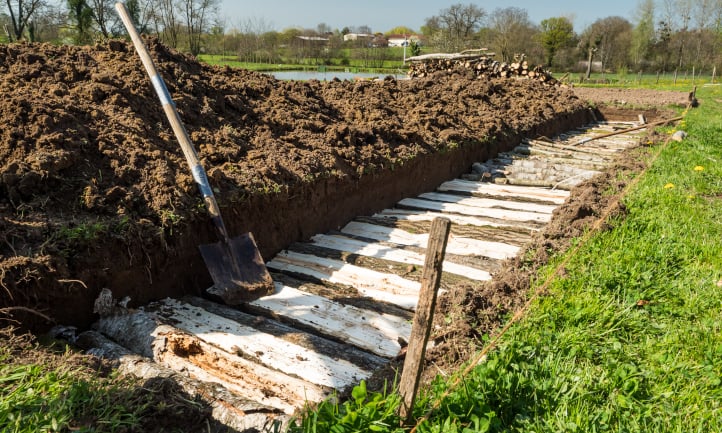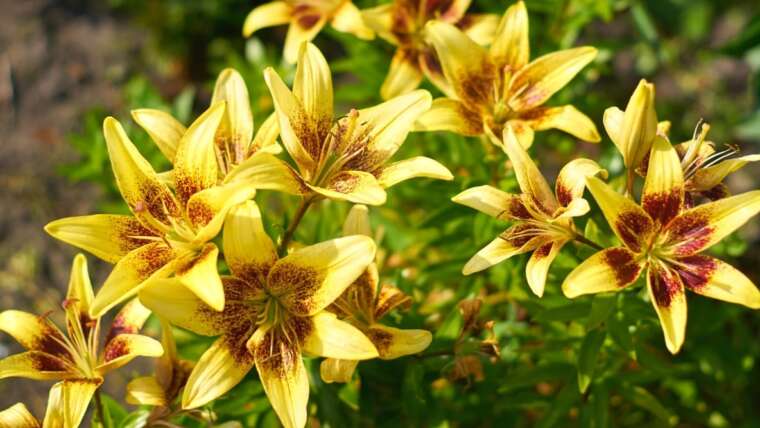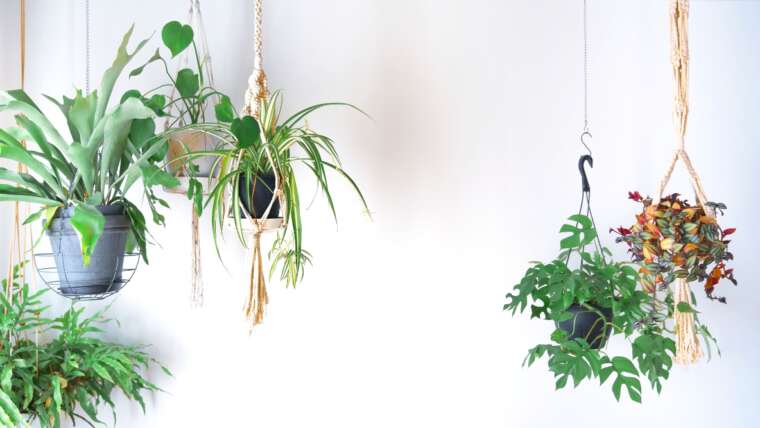New and even some seasoned gardeners often ask as the cold months draw near, “Can you compost in the winter?” Winter composting is a topic that some may dismiss because it seems impossible. However, it’s not!
Whether you’ve decided to work with a compost pile, compost tumblers, or outdoor or indoor composting, year-round composting is definitely achievable. In fact, winter is one of the best times to compost, especially outdoors. While we wistfully think about spring crops, we develop a rich nutrient base for our soon-to-be-thriving gardens.
So let’s discuss winter composting! We’ll cover how to prepare a compost pile for winter, and touch on other methods of composting that are viable in the winter months as well.
Preparing for Winter Composting
Composting in the winter.
While composting in the winter is something you can do, you’ll need to make some preparations to ensure a successful compost harvest in time for spring garden prep. Here are a few things you can do while you wait for the time when temperatures rise and you can begin planting flowers again.
How To Position Winter Compost Piles
Unless your compost is already in a place like the one we’re about to discuss, you’ll need to move it to the correct position. You want it to be in a spot that receives plenty of sunlight but also is somewhat sheltered from high winds, or rain and snow. We’ll talk about ways to protect your compost, but for now, know that repositioning may be a necessity.
If you don’t want to cover your compost with a tarp or plastic, you can dig a small trench to situate the compost deeper, and nestle it closer to the warm earth. A barrier of logs and a significant layer of insulating brown matter will do nicely to keep everything within the actual pile warm as well.
Harvest and Clear Out Fall Crops
At the end of the growing season, remove any plant debris around your fall crops, and harvest any that aren’t suited to cold climates and won’t be growing through winter. Chop and drop any cover crops that are ready to be harvested, or remove the crop after chopping and set it aside to be incorporated in the compost pile. If you have new materials from fall crops that will act as organic matter in your pile, get those ready to be incorporated.
Extract Ripe Compost
Because your finished compost isn’t going to do anything helpful, harvest it, as it won’t continue composting no matter the external weather situation. A small handful in your current batch should do the trick, and there will be plenty of room for the newer compost materials to break down.
Adding Excess Potting Soil
Repotting and up-potting may have been an important part of your fall routine, and it might be something you’d like to take care of indoors as winter sets in. You can use the remaining soil as an addition to the compost pile, and any of the plant matter that remains too.
However, if the plants that lived in the soil in question had pest infestations or disease, skip adding it to your compost and dispose of it. While there are some diseases that can’t survive the heat in the compost process, there are many that can, and it’s often not worth the risk.
Gather Brown Matter
 Composting leaves.
Composting leaves.
You’re going to need a lot of dead, carbon-rich materials to insulate and trap in moisture to keep the compost active. At this time, you not only want green materials, you also want brown matter. You’ve got tons of options here. Fallen leaves, grass clippings, shredded compostable packing materials, dead plant matter (without seeds), shredded wood, straw, and hay are all viable sources of brown matter.
One thing I’ve been doing this season ahead of winter is collecting leaves from varying sources. Not only do I have a source of leaves for my compost, but I also have a mulch that will insulate still-growing plants in freezing temperatures. And composting leaves is a really cool way to provide nutrients to your garden. Make sure to shred them before adding them to a compost pile or bin.
Winterizing Your Compost Pile
Here are the steps for winterizing the pile. Follow these and you’re well on your way to fresh spring nutrients added to the garden.
Preparations
Before we start, your compost pile should be large enough to stay warm when winter arrives. Piles that are too small will freeze and stop breaking down as the frozen months arrive. About 1.5 square meters is the appropriate minimum for a compost pile.
Another important thing to do as you’re preparing is to water the pile so it remains active and internally generates enough heat to maintain adequate microbial activity in colder months. Sprinkle enough water to keep the compost slightly moist, but not so wet that you’ll have a frozen pile in the snow. A moisture meter can help you determine when to water.
Another rule of thumb: keep the pile between 135°F and 165°F. Use a compost thermometer to ensure this range is present and make additions of green matter and activators to heat it up if necessary.
Using Pure Brown Matter
No matter what type of composting you’re doing, if you’re doing it outdoors, add a thick layer of brown matter. This could be compostable packing materials, a large layer of leaves, straw, or even hefty amounts of grass clippings. You’ll need a significant layer – at least 6 to 12 inches of brown matter.
Leaves are not only a free resource, they provide the right insulation and keep oxygen within the pile via the air pockets that sit between the leaves. You can even take bags of fall leaves you’ve collected and arrange them like a fortress around the compost. The same effect can be achieved by piling straw bales or hay bales, or even logs around. These are suitable brown materials to protect and insulate your compost through cold weather.
Tarp Protection
 Steaming compost pile.
Steaming compost pile.
Using a black plastic tarp to protect your pile from snow and cold temperatures is one way to retain heat and moisture in the composting area. If you don’t have a tarp handy, black trash bags are a good alternative. You can use landscaping staples to pin the tarp to the earth, or line it with pavers, bricks, or rocks.
Remember to lift the tarp every once in a while and add some water to keep the composting process going. Consult your moisture meter if necessary. You’ll want to do this when it’s not so cold the water from a hose or watering can will freeze instantly. Give the pile a good soak, and then replace the cover.
Using Green Matter for Internal Heating
Scraps and fresh garden waste are perfect for the process, as you may already be aware. Decomposition requires both brown materials and green ones. However, you can use organic matter to heat your pile or bin from within. These activators keep the material hot as the temperature drops.
Great activators include fresh food scraps, steer manure, coffee grounds, bone meal, blood meal, and – believe it or not – urine. Adding a bit of these to your compost pieces will speed up the decomposition process and keep things nice and warm. Then, top with brown materials.
If you’re using food waste to activate your piles, you want to make sure they’re a little smaller than usual as microbes and beneficial soil dwellers are much slower in the winter months. Also, if they are too large, food scraps freeze in harsh cold weather, ceasing the process.
Slow Your Turn
Wait to turn the pile to keep it warm, and keep the beneficial microbes and bugs safe in your outdoor compost pile. There’s very little need to turn while you’re winter composting, and doing so can put the beneficial creepy crawlers at risk. Unless they smell or become oversaturated, don’t turn compost piles or the material in your winter compost bin. Keep it much more hermetically sealed than you would for summer composting.
On the flip side of this, you can still hot-compost in the winter if you want, and there’s a lot of satisfaction in seeing your compost pile steaming in the chilly air. But it can be more difficult to turn your compost if the exterior has frosted or frozen over, and you do run the risk of your beneficial being exposed to the cold!
Avoid High pH Materials
Raising pH can be dangerous to compost pile dwellers. While adding green matter can help activate the decomposition process, adding too much will kill off the microbes that improve not only the process but the composition of the compost as well. Things like wood ash, manure, and too many kitchen scraps fall into the high pH category.
You can monitor the pile pH throughout this process if you already know there’s a high pH present. Use a pH tester as you’re prepping for the winter months to determine how much activation to add to the pile. If your pile is super alkaline, a substantial amount of slightly acidic materials will help.
Alternative Winter Composting Methods
 Logs and branches in hugelkultur garden bed.
Logs and branches in hugelkultur garden bed.
Say you don’t have a compost pile, and you’re not interested in building one. Here are a few of the most prevalent alternatives to working with a traditional compost pile. Many are suited to gardeners who want to start composting on a smaller scale. Some even work for those who don’t garden at all and simply want to produce less waste.
Plastic Bins and Tumblers
If you’re working with a regular compost bin or a compost tumbler, you want to ensure it’s positioned correctly as we discussed in the beginning of this piece. While you won’t need to provide much more than a tight-fitting lid, you do need to ensure your compost is protected all winter long.
One way to assure extra moisture control is to drape a tarp or some non-porous material over the compost bins or tumblers to keep out excess moisture in rain and snow storms.
Bokashi Composting
Another great winter composting method is not even an outdoor one! Try composting your kitchen scraps in a bokashi composting system. This method is great for people who don’t have space for traditional compost piles and prefer to compost from the comfort of their home.
However, bokashi is adaptable to indoor and outdoor methods. It’s a pretty simple process where kitchen scraps (with egg shells included) are placed in a bucket and topped with bran for microbial inoculation. They are fermented in the bucket and the liquid is drained away via a false floor or secondary container beneath the bokashi composting buckets. Keep adding scraps, packing them down, and topping them with bokashi bran to fill the bucket, draining off moisture, then seal it and allow it to fully ferment for 2-4 weeks.
What results after fermentation is pre-compost that you can add to a large compost pile. You can incorporate the resulting matter in a vermicompost system or bury it directly in your raised bed or container garden as well. Best of all, a full bokashi bucket can be stored until the ground thaws as long as you drain off any of the leachate, so you can store up bokashi over the winter and bury it once the ground thaws in the early spring.
Vermicomposting
Also known as worm composting, this method involves feeding green and brown matter to worms and harvesting their resulting worm castings, or worm poop. While you can keep a vermicompost system outdoors easily in spring when there is warm weather, in times of extremes you need to bring it into a climate-controlled area to avoid killing the worms.
There are a number of vermicomposting products out there. An excellent one that we carry in our online shop is the Urban Worm Bag. It comes with everything you need to get started. Then, you can decide what to feed worms that live in your bin. This bin, when kept out of intense heat and freezing temperatures, can be active year-round.
Kitchen Waste Composters
One solution to winter composting indoors is the many countertop composters that turn kitchen scraps into pre-compost or dirt that you can add to outdoor plants or even indoor ones. If you have wondered which are best for you, check out this list of countertop compost bins we’ve compiled. Typically, countertop compost bins are a catchbasin for your kitchen waste that you then dump into your regular composting process when you can access it.
There is one that we know is worthwhile and provides gardeners with a way to handle food waste without the necessity for a pile. The Lomi composter is a really interesting way to provide nutrients to the garden in the form of pre-compost. Per our Lomi compost review, do not add more than 10% of the resulting material to a soil blend.
The reason for this is the materials heat up the soil of the garden and can burn plants. However, that makes it great for compost in the winter, as it can activate colder composts in the winter months.
Hugelkultur
Most gardeners know about the basic requirements for building a compost pile, but they may not know about this one. Another great way to go from scraps and debris in the winter months to finished compost is the magical method of hugelkultur.
The basic process here is to build a pile or mound that has a base of large logs that have smaller logs placed around them and even smaller twigs and branches above. Between these base layers, gardeners pile fresh food waste, straw, coffee grounds, leaves, and clippings.
The pile breaks down over time, although larger logs will not break down in one winter. But for most branches or leaves, in spring you have a highly nutritious and regenerative soil source you can plant directly into. So while it’s not exactly composting in the winter, it’s a decomposition method. You can even do hugel in a raised bed!
Sheet Mulching
If you were to take the hugelkultur process and flatten the pile, you’d be sheet mulching or practicing what has been popularized as the Back to Eden Method. What is lovingly deemed lasagna gardening is a way of layering green and brown materials on top of a thick layer of cardboard. You can pile these materials in winter and have a great garden bed you can plant out in spring with this method as well.
You can even use the resulting material just as you would finished compost after a few months of decomposition in spring. Again, not exactly composting, but an excellent way to use the same materials you would if you were simply composting in the winter.
Frequently Asked Questions
 Compost pile ingredients in the snow.
Compost pile ingredients in the snow.
Q: How do you compost in the winter time?
A: There are several ways to keep your compost game on point when it’s cold outside. Check above to see which is best suited to your situation.
Q: Can you put compost outside in the winter?
A: Absolutely. There are a few things you need to do to protect your pile from winter to spring. Check those out above.
Q: How do you speed up compost in the winter?
A: You want to insulate the pile either with just brown matter, or brown matter and a tarp. Then activate the compost.
Q: What temperature is not suitable for composting?
A: Thankfully in winter, you won’t have to worry about the pile getting too hot, but you want to keep the pile between 135°F and 165°F.
Q: Can you compost all year round?
A: For sure! Whether you’ve opted to continue working a pile outdoors or if you’ve chosen an indoor method, you can compost for the entire year.
Q: What happens if I don’t turn my compost?
A: Usually, an unturned compost pile will settle and may need to be reactivated to continue to decompose material. However, in winter, you can skip turning to keep it warm unless you’re trying to hot compost year-round.
Q: When should I stop adding to my compost pile?
A: Keep adding through winter, and then allow it to cure in spring so you can use the finished product in your garden.
Q: How often should I add scraps to compost?
A: In winter, head out the back door and keep layering green and brown material every few days. Don’t turn the pile, and keep it well protected from winds and precipitation.




